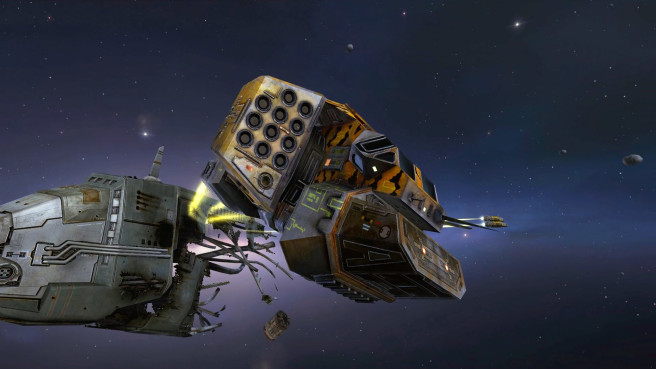The beginning of Homeworld is one of the best in the history of video games. It establishes the game’s story, its well-matched tone, and beautifully introduces you to the majesty, emptiness, and tragedy of what the game’s scale offers.
In looking at it again I realized it also starts off an RTS campaign in a smarter way than most RTS games before, and since. Usually an RTS starts with you controlling a very small number of units on a heavily scripted mission, or playing a very straight forward scenario where you slow roll the enemy’s bases. RTS single player campaigns have a reputation for being uninteresting compared to other genres, and often do a poor job of actually teaching the game. On this second point they tend to teach a player how to tackle that specific scenario, but translate poorly to skirmish and PVP. Contrasting how they start against Homeworld highlights where these problems come from.
After the most basic tutorial of learning the controls, the first real mission of Homeworld is an ambush. The game provides no warnings, narrative, or otherwise. Out of nowhere a large raiding party of enemy ships attacks. You watch an in-engine cinematic of the mysterious attackers bearing down on you. Its excellent soundtrack, and direction distract you from the fact that the game just took control away from you while these ships advanced from the limits of your detection to right on top of your mothership. You regain control, and again with no direction on how, you must fend off a constant stream of aggression pouring directly onto your ‘base’.

In these first moments Homeworld teaches you some of the most important principles of RTS, usually among the hardest for players to learn going from single player to PVP. It teaches you to expect early aggression, rushes. It teaches you that in this game you will sometimes feel overwhelmed, and like you’ve lost control. But it’s still designed well as a first mission. It’s relatively easy, and designed to be beaten on the first go. And in that is the subtlest, and maybe most important lesson it teaches: your feeling of lost control is not necessarily a sign you’re losing. It even nudges you towards learning how to defend against rushes. In the previous mission you built a collection of small ships that came with you into this one. So it’s effectively simulated you properly preparing for a rush by having ships of your own, even if the enemy does appear right on top of you.
Advertisements Share this:





